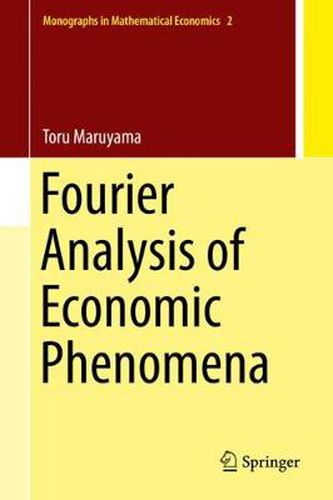Readings Newsletter
Become a Readings Member to make your shopping experience even easier.
Sign in or sign up for free!
You’re not far away from qualifying for FREE standard shipping within Australia
You’ve qualified for FREE standard shipping within Australia
The cart is loading…






This title is printed to order. This book may have been self-published. If so, we cannot guarantee the quality of the content. In the main most books will have gone through the editing process however some may not. We therefore suggest that you be aware of this before ordering this book. If in doubt check either the author or publisher’s details as we are unable to accept any returns unless they are faulty. Please contact us if you have any questions.
This is the first monograph that discusses in detail the interactions between Fourier analysis and dynamic economic theories, in particular, business cycles.Many economic theories have analyzed cyclical behaviors of economic variables. In this book, the focus is on a couple of trials: (1) the Kaldor theory and (2) the Slutsky effect. The Kaldor theory tries to explain business fluctuations in terms of nonlinear, 2nd-order ordinary differential equations (ODEs). In order to explain periodic behaviors of a solution, the Hopf-bifurcation theorem frequently plays a key role. Slutsky’s idea is to look at the periodic movement as an overlapping effect of random shocks. The Slutsky process is a weakly stationary process, the periodic (or almost periodic) behavior of which can be analyzed by the Bochner theorem. The goal of this book is to give a comprehensive and rigorous justification of these ideas. Therefore, the aim is first to give a complete theory that supports the Hopf theorem and to prove the existence of periodic solutions of ODEs; and second to explain the mathematical structure of the Bochner theorem and its relation to periodic (or almost periodic) behaviors of weakly stationary processes.Although these two targets are the principal ones, a large number of results from Fourier analysis must be prepared in order to reach these goals. The basic concepts and results from classical as well as generalized Fourier analysis are provided in a systematic way.Prospective readers are assumed to have sufficient knowledge of real, complex analysis. However, necessary economic concepts are explained in the text, making this book accessible even to readers without a background in economics.
$9.00 standard shipping within Australia
FREE standard shipping within Australia for orders over $100.00
Express & International shipping calculated at checkout
This title is printed to order. This book may have been self-published. If so, we cannot guarantee the quality of the content. In the main most books will have gone through the editing process however some may not. We therefore suggest that you be aware of this before ordering this book. If in doubt check either the author or publisher’s details as we are unable to accept any returns unless they are faulty. Please contact us if you have any questions.
This is the first monograph that discusses in detail the interactions between Fourier analysis and dynamic economic theories, in particular, business cycles.Many economic theories have analyzed cyclical behaviors of economic variables. In this book, the focus is on a couple of trials: (1) the Kaldor theory and (2) the Slutsky effect. The Kaldor theory tries to explain business fluctuations in terms of nonlinear, 2nd-order ordinary differential equations (ODEs). In order to explain periodic behaviors of a solution, the Hopf-bifurcation theorem frequently plays a key role. Slutsky’s idea is to look at the periodic movement as an overlapping effect of random shocks. The Slutsky process is a weakly stationary process, the periodic (or almost periodic) behavior of which can be analyzed by the Bochner theorem. The goal of this book is to give a comprehensive and rigorous justification of these ideas. Therefore, the aim is first to give a complete theory that supports the Hopf theorem and to prove the existence of periodic solutions of ODEs; and second to explain the mathematical structure of the Bochner theorem and its relation to periodic (or almost periodic) behaviors of weakly stationary processes.Although these two targets are the principal ones, a large number of results from Fourier analysis must be prepared in order to reach these goals. The basic concepts and results from classical as well as generalized Fourier analysis are provided in a systematic way.Prospective readers are assumed to have sufficient knowledge of real, complex analysis. However, necessary economic concepts are explained in the text, making this book accessible even to readers without a background in economics.